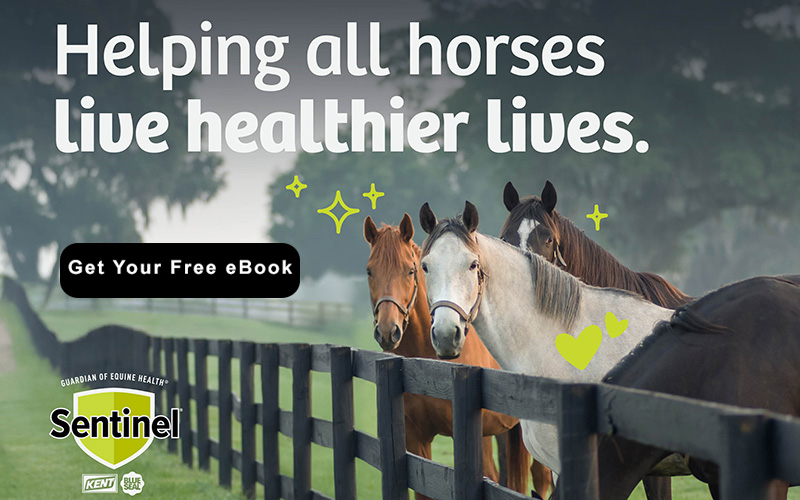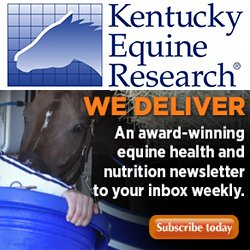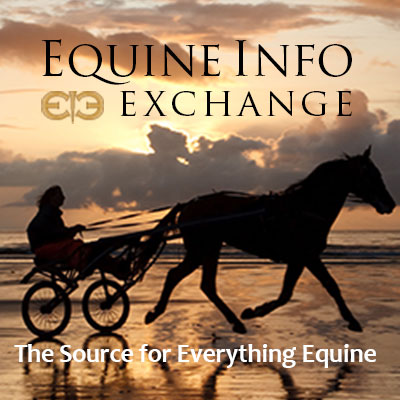
by Kentucky Equine Research Staff
Time, weather, and suitable facilities, rather than an owner’s knowledge and ability, were the three main factors limiting how much human-led exercise (HLE) a horse receives, said the authors of a U.K.-based survey exploring exercise as a means of weight management.
Many horses in the U.K. are maintained in “obesogenic environments,” defined as a setting that promotes gaining weight and one that is not conducive to weight loss. Even though horses are turned out for self-directed exercise (SDE), the pasture is too often nutrient-rich. As a result, horses get the benefits of turnout, including free movement, socialization, and grazing, but overconsume calories. Obesity is therefore common, and 40% of the 804 survey respondents admitted that their horses were either overweight or obese.
“This number is probably much higher than suspected, as previous research found that owners frequently underestimate their horse’s weight and body condition,” explained Ashley Fowler, Ph.D., a nutritionist for Kentucky Equine Research.
Obesity is a welfare issue because horses are at risk of developing osteoarthritis, laminitis, and metabolic problems.
Traditional means of managing obesity center on nutrition, primarily reducing dietary intake by restricting grazing and maintaining horses in individual stalls. This approach breaches the three “f’s” of equine welfare: freedom, friends, and forage.
“Instead of solely focusing on nutrient restriction, another approach to weight management is increasing energy expenditure either by HLE including longeing and riding or encouraging voluntary movement (SDE) during turnout,” Fowler said.
Based on the survey, most owners indicated that their horses had daily turnout even in the winter. The bulk of the horses also engaged in HLE, primarily hacking or flatwork three to five times per week.
“The top three barriers to HLE were weather, time, and the availability of suitable facilities in which to exercise,” Fowler indicated.
But even with HLE, horses were believed to be overweight or obese because exercises were low-intensity and “unable to neutralize the obesity risk promoted by grass-rich environments,” stated the survey authors.
While owners indicated that they realized exercise was important in managing obesity, they felt increasing SDE rather than HLE would be a more realistic option due to lack of time combined with weather and lack of suitable facilities in which to exercise their horses. The researchers then suggested “track systems” for improving SDE. These are low- or no-grass tracks built around the perimeter of a field. Resources are then distributed throughout the track to promote movement.
Even though this study was conducted in the U.K., research on horses in the U.S. has also indicated a high prevalence of obesity in the equine population. Further, one U.S. study found horse owners also felt that caring for overweight horses increased time and labor input.**
As stated by the researchers, exercise plays a vital role in weight management, reducing the risk of insulin dysregulation, a key feature of equine metabolic syndrome. Nonetheless, dietary restriction still plays a key role in weight management, and Fowler reminds owners the importance of forage.
“Horses require at least 1.5% of their body weight in forage each day to support a healthy gastrointestinal tract and to minimize the chance of developing equine gastric ulcer syndrome,” she said. “Even though overweight horses require a reduced-calorie diet, they still need to be fed sufficient vitamins and minerals. Including a ration balancer or vitamin-mineral supplement can help achieve this goal without overproviding calories.
Reprinted courtesy of Kentucky Equine Research. Kentucky Equine Research is an international equine nutrition, research, and consultation company serving horse owners and the feed industry. Our goals are to advance the industry's knowledge of equine nutrition and exercise physiology, apply that knowledge to produce healthier, more athletic horses, and support the nutritional care of all horses throughout their lives. Learn more at Kentucky Equine Research.
There a more informative articles in our section on Health & Education. While you're here be sure to visit our Curated Amazon Store.
*Naydani, C.J., and T. Coombs. 2025. Exercise as a welfare strategy? Insights from horse (Equus caballus) owners in the UK. Animal Welfare. 34:e14.
**Jaqueth, A.L., M.E. Iwaniuk, and A.O. Burk. 2018. Characterization of the prevalence and management of over-conditioned ponies and horses in Maryland. Journal of Equine Veterinary Science 68:26-32.

































